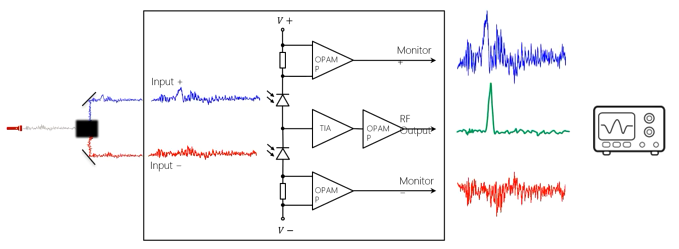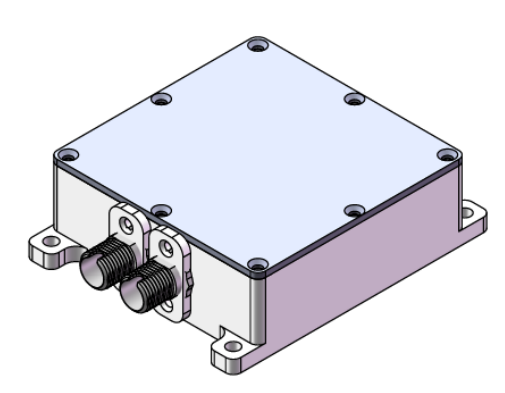 Balanced photodetector is a photodetector based on differential technology, which is similar to a balanced bridge, which can improve the sensitivity and anti-interference ability of the photodetector.
Balanced photodetector is a photodetector based on differential technology, which is similar to a balanced bridge, which can improve the sensitivity and anti-interference ability of the photodetector.
A balanced photodetector consists of two photodiodes and a differential amplifier. The optical signal is first split into two channels via an optical beam splitter and fed into two photodiodes. These two photodiodes work in the same way, but the phase of the input optical signal is reversed. When two photodiodes receive an optical signal of the same intensity and opposite phase, their output currents will also be opposite, so their output signals can be subtracted to obtain a differential signal.
The differential signal is amplified by the amplifier, and the working point of the two photodiodes is adjusted through the feedback loop, so that their output signals are always equal, so as to eliminate the inhomogeneity and difference in the light source intensity and photodiode performance, and improve the sensitivity and anti-interference ability of the detector. The output signal of a balanced photodetector is related to the intensity and phase difference of the optical signal, and the sensitivity and dynamic range of the detector can be optimized by adjusting the phase.
Balanced photodetectors are often used in high-speed optical communications, lidar, optical remote sensing, and other fields to improve the performance and reliability of the system.
Common-mode rejection ratio of a balanced detector
The Common Mode Rejection Ratio (CMRR) of the balanced detector is an important parameter to measure the ability of the balanced detector to suppress common mode interference. It is defined as the ratio of the ability of a balanced detector to suppress a common-mode signal to its gain to a differential signal, and is usually expressed in decibels (dB).
A balanced detector is a differential signal amplifier that enhances the differential signal while suppressing the common-mode signal, thereby improving the signal quality. In a balanced detector, the differential signal is the difference between the two input signals, while the common-mode signal is the average of the two input signals. When the input signal of a balanced detector contains a differential signal and a common-mode signal, the detector will amplify the differential signal and suppress the common-mode signal.
The common-mode rejection ratio is an important index to measure the ability of the balanced detector to suppress the common-mode interference, and the larger it is, the stronger the suppression ability of the balanced detector to the common-mode signal and the higher the gain to the differential signal.
What are the uses of a balance detector?
Optical coherence tomography OCT(Click for more info)
Distributed Fiber Optic Sensing DVS/DAS
Wind radar
Coherent probing
Customized Balanced Photodetectors
Click for our product: Compact Balanced Photodetector with single Power Supply
Please contact our engineers, we can provide you with customized photoelectric detection services. We are experienced in customizing photodetectors, , and currently provide customized solutions for customers in medical devices, semiconductors, wind radars and other industries.
Contact Email: sales@optoelectrotek.com
Or leave a Online Message






